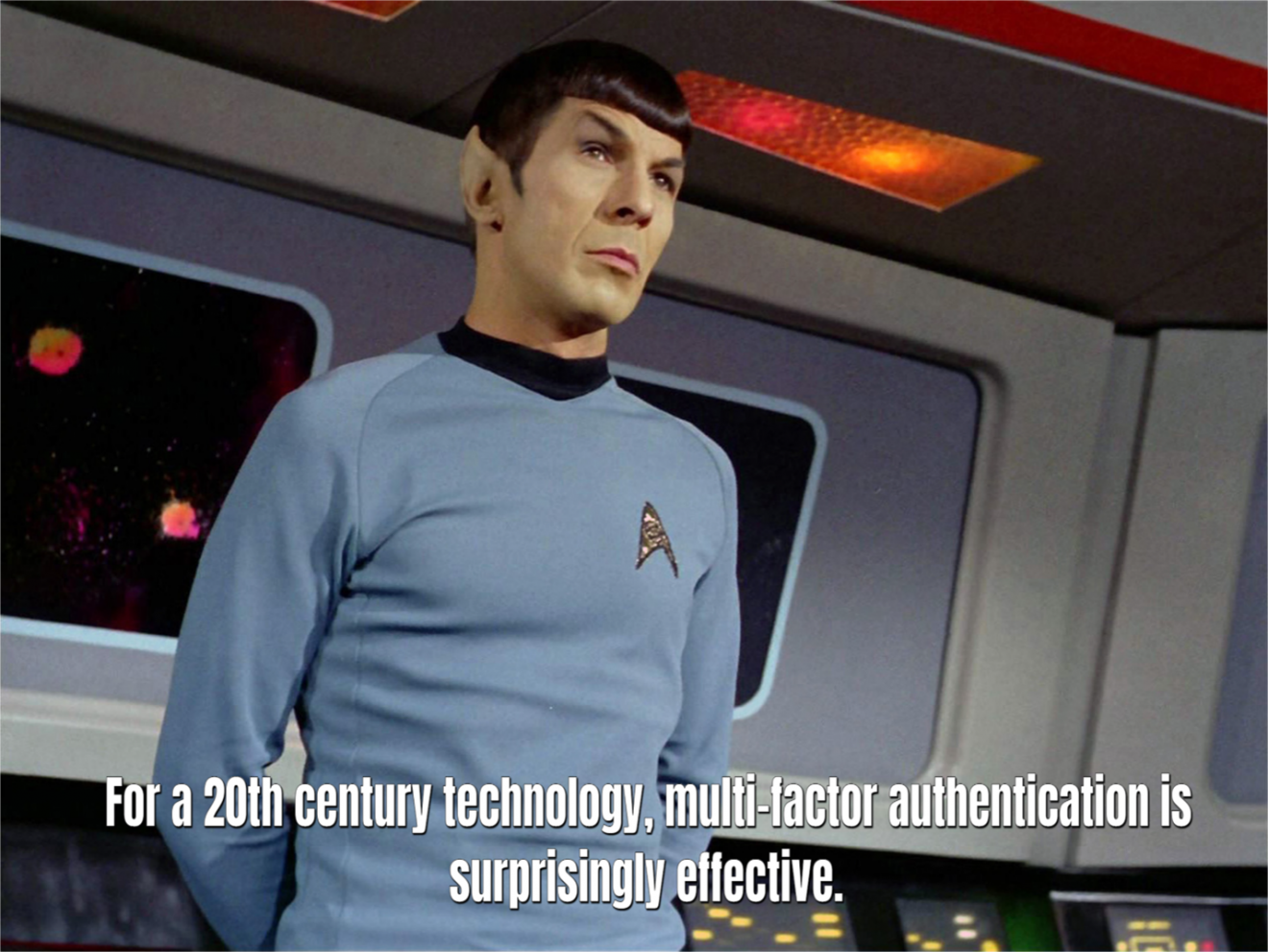Multi-Factor Authentication
Multi-Factor Authentication
Sounds like something from Star Trek, right? Well, blessedly for us it exists right now, and it’s one of the best ways to protect your accounts!

So, what is multi-factor authentication (MFA)? The Cybersecurity & Infrastructure Security Agency does a great job explaining about it!
WHAT IS IT
Multi-factor authentication (MFA) is defined as a security process that requires more than one method of authentication from independent sources to verify the user’s identity. In other words, a person wishing to use the system is given access only after providing two or more pieces of information which uniquely identifies that person.
HOW IT WORKS
There are three categories of credentials: something you either know, have, or are. Here are some examples in each category.
SOMETHING YOU KNOW
- Password/Passphrase
- PIN Number
SOMETHING YOU HAVE
- Security Token or App
- Verification Text, Call, Email
- Smart Card
SOMETHING YOU ARE
- Fingerprint
- Facial Recognition
- Voice Recognition
In order to gain access, your credentials must come from at least two different categories. One of the most common methods is to login using your username and password. Then a unique one-time code will be generated and sent to your phone or email, which you would then enter within the allotted amount of time. This unique code is the second factor.
WHEN SHOULD IT BE USED
MFA should be used to add an additional layer of security around sites containing sensitive information, or whenever enhanced security is desirable. MFA makes it more difficult for unauthorized people to log in as the account holder. According to the National Institute of Standards and Technology (NIST) MFA should be used whenever possible, especially when it comes to your most sensitive data — like your primary email, financial accounts, and health records. Some organizations will require you to use MFA; with others it is optional. If you have the option to enable it, you should take the initiative to do so to protect your data and your identity.
ACTIVATE MFA ON YOUR ACCOUNTS RIGHT AWAY
To learn how to activate MFA on your personal accounts, head to the Lock Down Your Login site, which provides instructions on how to apply this stronger form of security to many common websites and software products you may use. If any of your accounts are not listed on that resource site, look at your account settings or user profile and check whether MFA is an available option. If you see it there, consider implementing it right away!
To use MFA at Huntington University with your email and Office 365 accounts, start here. MFA is for everyone — faculty, staff, and students! Usernames and passwords are no longer sufficient to protect accounts with sensitive information. By using multi-factor authentication, you can protect these accounts and reduce the risk of online fraud and identify theft. Consider also activating this feature on your social media accounts!
I want to take some time at the end of our tip today to thank Chris Erick for the awesome job he did creating the Formstack page for our MFA signup. He put together the clear concise instructions that make enabling MFA on your account so much easier!
Posted By: Bob Landon – IT Services
Posted By: Bob Landon - IT Services
